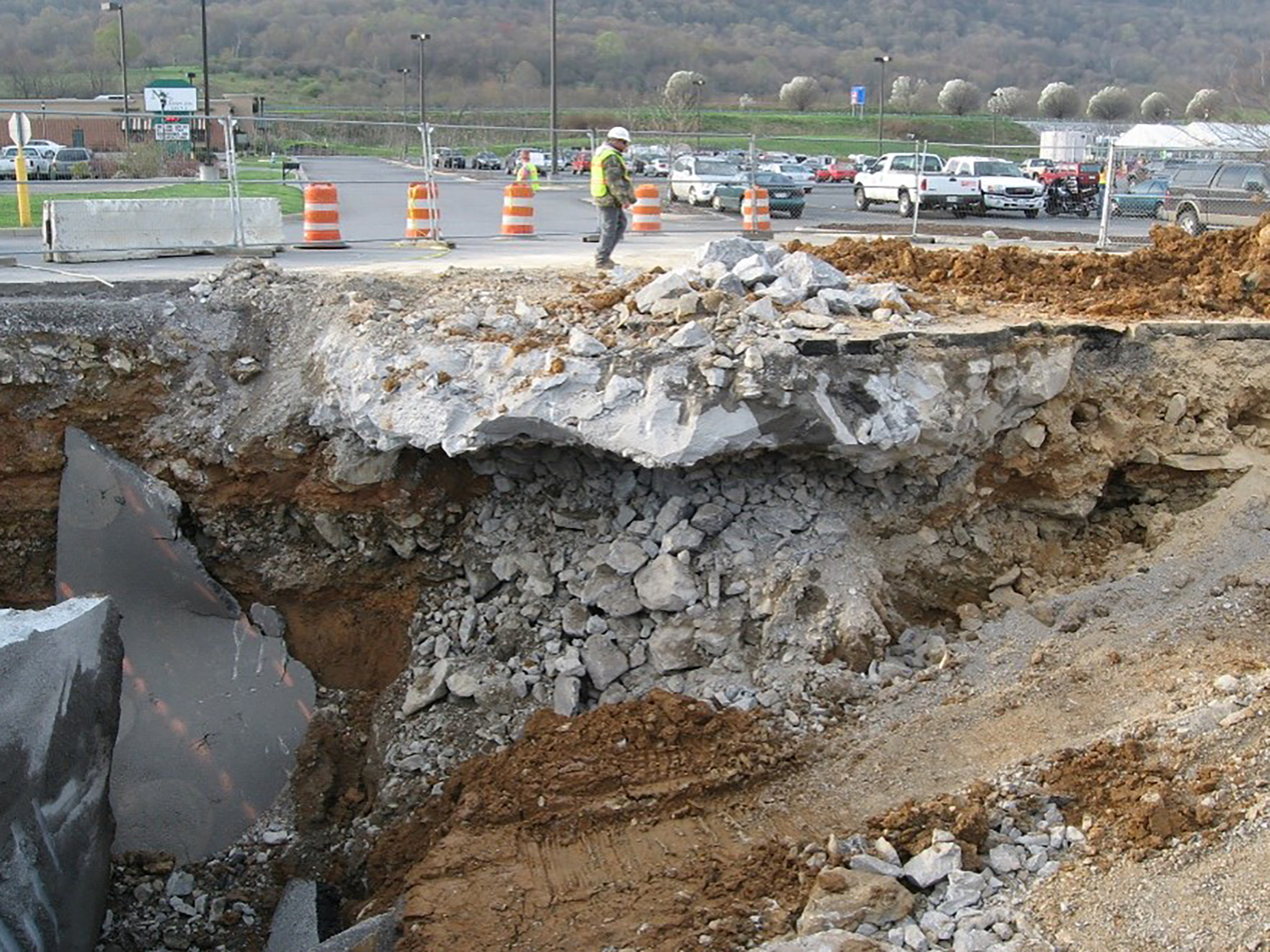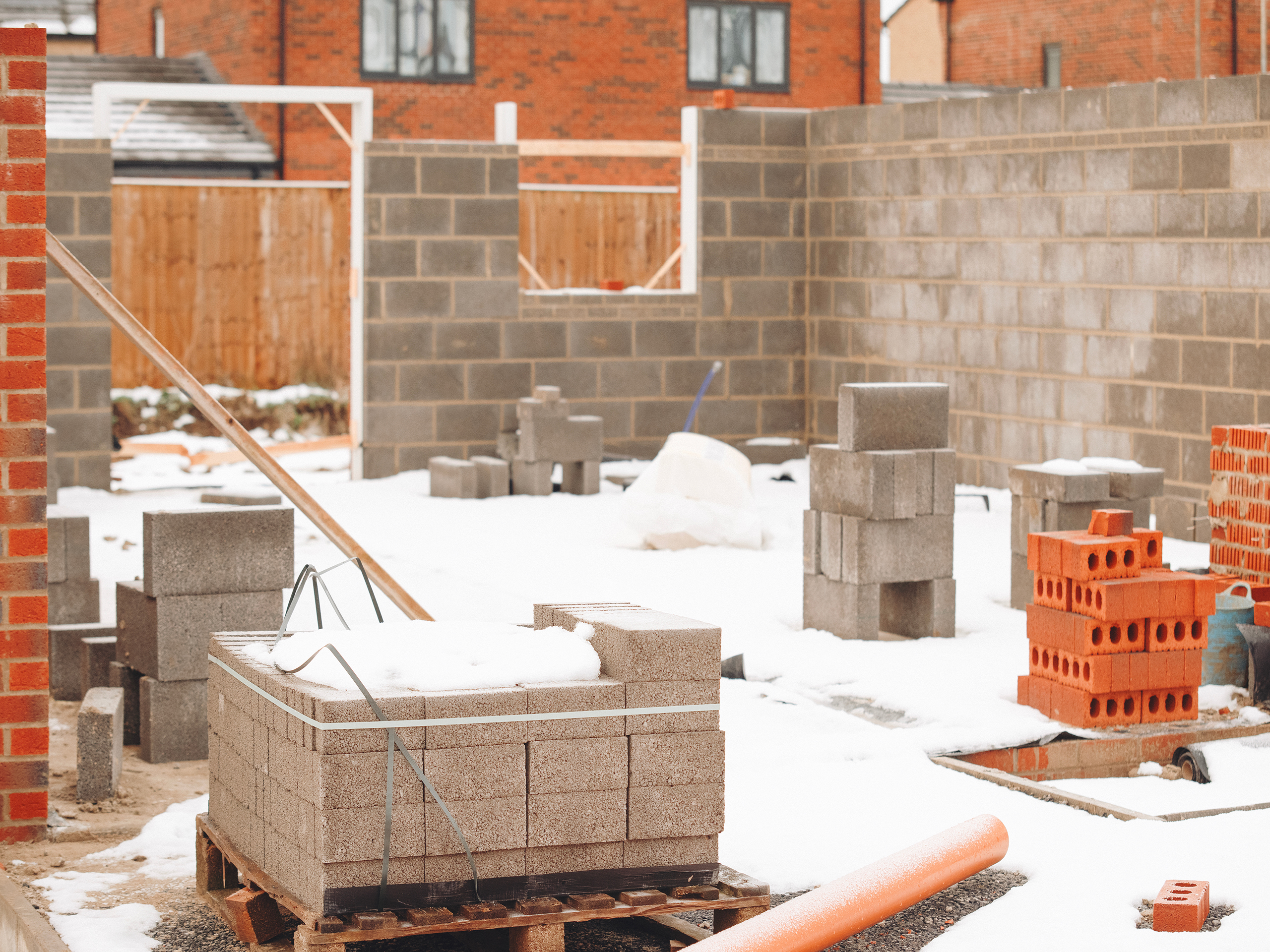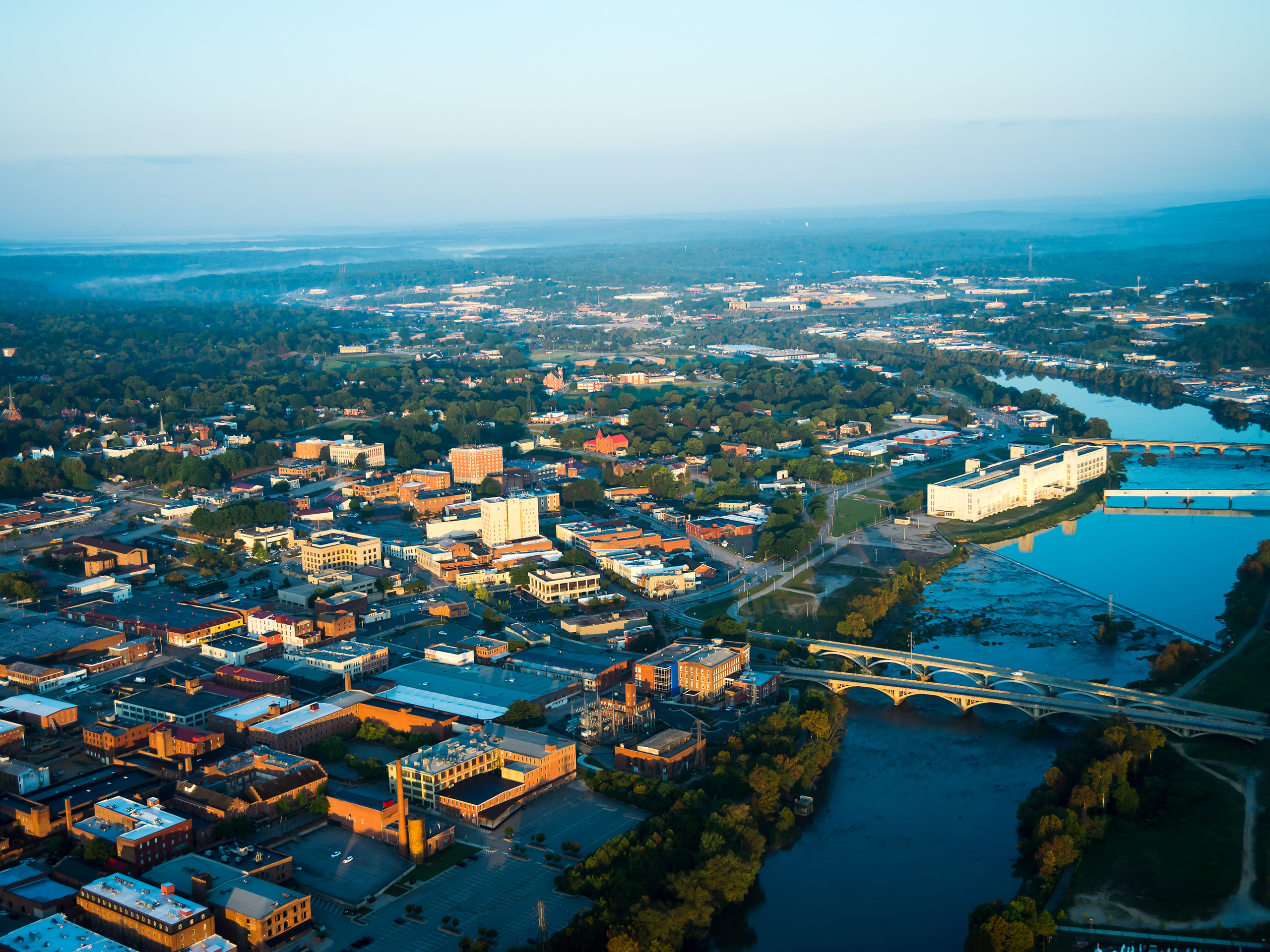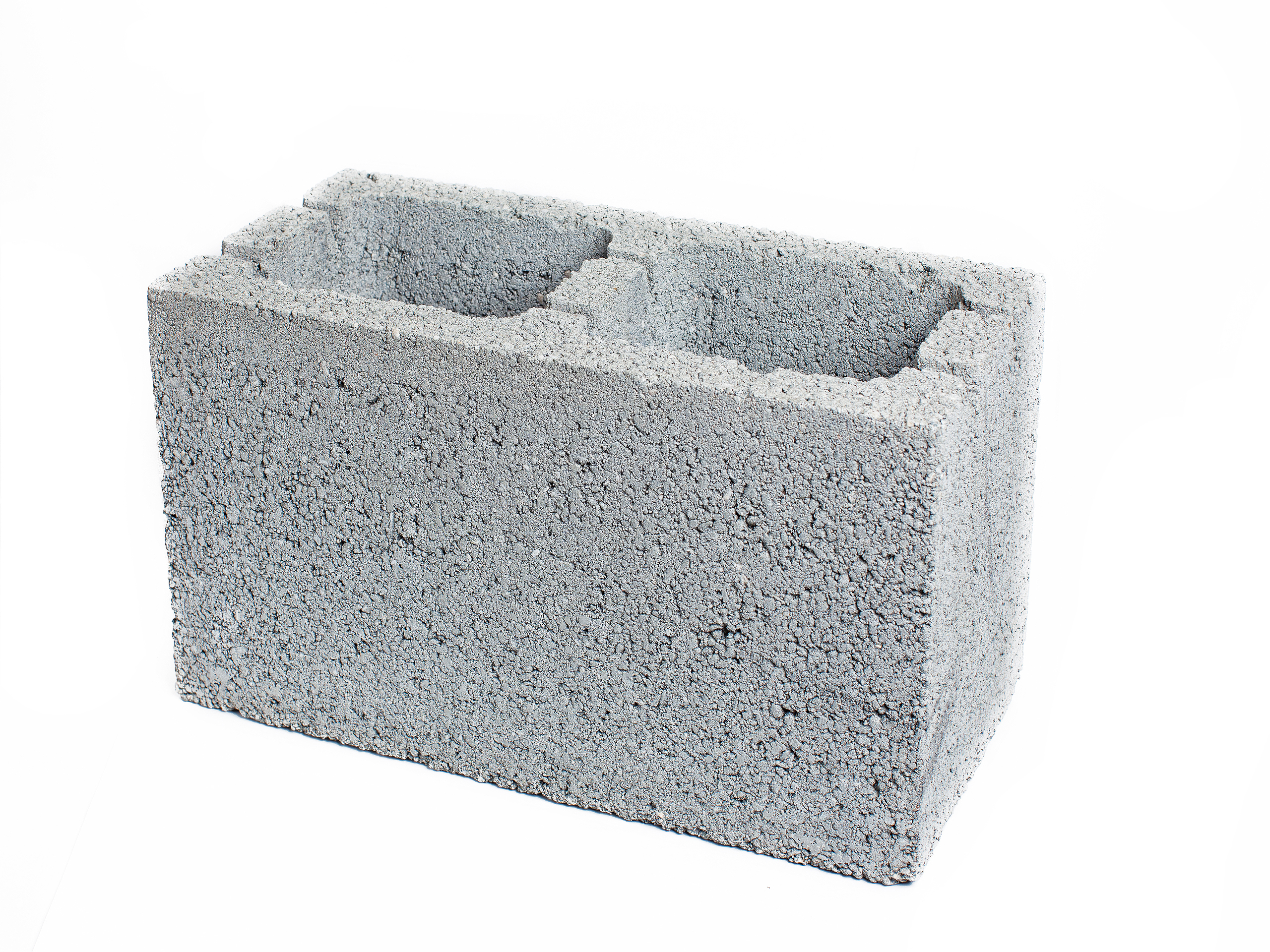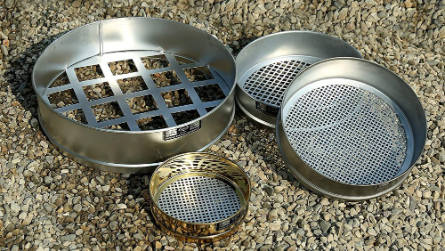What is a sinkhole? A sinkhole is a depression in the ground that has no natural external drainage. This means that when it rains, all the water stays inside the sinkhole and typically drains into the subsurface. Sinkholes are most common in what geologists and soils engineers call “karst terrain,” a region where the types of rock below the land surface can naturally be dissolved by groundwater circulating through them. Soluble rocks include salt beds and domes, as well as gypsum, limestone, and other types of carbonate rock. When water from rainfall and other sources moves through the soils, these types of rock begin to dissolve, creating underground spaces and caverns that are conducive to sinkhole development. Sinkholes are dynamic and dramatic because the land usually remains intact for a period of time until the underground spaces become too large. If there is insufficient support for the land above the spaces, a sudden collapse of the land surface can occur.
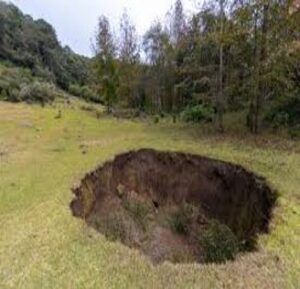
There are three main types of natural sinkholes, and they threaten approximately 20% of the United States; however, human activities can also induce sinkholes in any location.
- Dissolution Sinkholes: These form when water slowly dissolves bedrock, like limestone, enlarging natural openings and causing the overlying soil to settle into the growing They are often slow to develop and can be less dangerous.
- Cover-Subsidence Sinkholes: These develop where the overlying sediment is permeable and contains sand. The sand slowly moves into the underlying void, creating a depression at the surface.
- Cover-Collapse Sinkholes: These are the most dramatic type and form when a cavity in the bedrock is covered by a cohesive layer of soil or a mix of cohesive soil and The underground cavity can expand, thinning the overlying “cover” until it can no longer support its own weight, and collapses occur.
Natural sinkholes are not rare; they are quite common, cause significant damage, and the financial remediation costs are often extreme. A recent U.S. Geological Survey (USGS) estimate suggests that sinkholes cause at least $300 million in damage annually. However, because there is no national-level tracking of sinkhole costs and state reporting is inconsistent, this figure is considered a conservative estimate.
Some early visible signs of a developing natural sinkhole include depressions in the ground, structural cracks in buildings, and changes in vegetation or water drainage. Since natural sinkholes typically form gradually over a long period, early visible signs can provide critical warnings. Other early warning signs include leaning objects, such as trees, utility poles, signs, and even buildings, as well as changes in water flow, like new ponds caused by rainfall. Look for cracks in pavement, exposed foundation cracking and shifting, or sinking ground around foundations. Be alert for leaks or flooding during rainfall or when water pools around the foundation.
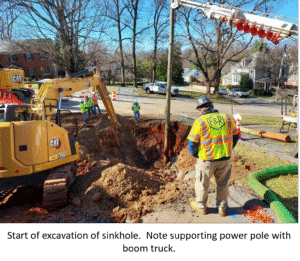
If early visible indicators (trouble signs) are observed, then a sinkhole investigation should be done to determine the areal extent and depth of the new sinkhole, as well as the depth of bedrock pinnacles upon which sinkhole stabilization may be founded. The investigation may involve visual inspection, excavation, borings, and/or geotechnical studies. Visual inspection is usually adequate for smaller sinkholes (less than 10 feet in diameter at the ground surface) where the bedrock throat is visible from the ground surface.
Excavation by backhoe is commonly used for small- to moderate-sized sinkholes (Up to 20 feet in diameter) when the throat of the sinkhole is not visible from the ground surface. Track hoes, clamshells, or other excavating equipment are typically used when soil depths exceed about 20 feet. Soil borings may be considered when more extensive sinkhole development is anticipated and/or critical foundations of structures are at risk. This investigation involves closely spaced borings designed to determine the location and depth of bedrock pinnacles, cavities, and sinkhole throats. Geophysical studies may be necessary to delineate the sinkhole’s size and dimensions more accurately.
The two main types of sinkhole repairs are reverse filter and flowable fill plugs. In karst geology, a reverse filter method is often a more desirable remediation technique for certain types of sinkholes, particularly for smaller ones and those that do not pose a threat to major structures. The method is designed to stabilize the sinkhole while maintaining the natural groundwater flow that has existed for years, preventing future soil erosion. However, the suitability of the reverse filter depends heavily on the specific characteristics of the sinkhole.
- The sinkhole is first excavated to remove any loose soil, debris, or other material until stable bedrock is reached. The excavation is filled with progressively coarse to smaller rock sizes.
- A layer of large, interlocking rock (rip rap), 6 to 18 inches in size, is placed at the bottom to bridge the throat of the sinkhole and prevent fill material from being washed away. A geotextile fabric should also be used in conjunction with the rock to contain the fill and prevent surrounding soil fines from migrating into the sinkhole voids.
- Subsequent layers of progressively smaller, graded, clean rock fill are added. This allows water to continue flowing through the natural subsurface network without carrying away the surrounding
- A final layer of finer material, such as a clay core or impervious soil cap, is used to finish the top
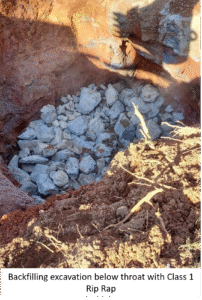
The primary advantage of this reverse filter methodology in karst terrain is that it is designed to allow water to continue percolating into the ground, thereby preserving the natural hydrology of the area and preventing the diversion of water, which could trigger new sinkholes elsewhere.
Flowable Fill Plug Method of Sinkhole Remediation
Flowable fill is a suitable choice for sinkhole remediation when the goal is to completely plug the void and prevent water from entering subterranean channels, as well as when rock support for a reverse filter is needed within 25 feet of the ground surface. Flowable concrete is also known as a “controlled low-strength material” (CLSM). ACI 229R, “Report on Controlled Low-Strength Materials,” is a good standard to review for anyone planning to use flowable fill as a sinkhole remediation material. ACI 229R contains essential and useful information about the properties of flowable fill, including proposed concrete mix proportions.
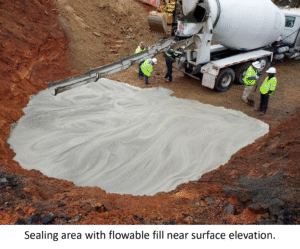
During sinkhole remediation, the CLSM can be pumped into the sinkhole, where it flows into and fills all of the cracks and crevices. The CLSM can also be pumped from a distance, reducing extensive labor costs. While the reverse filter method, when completed, is permeable, CLSM is far less so. The portland cement content of CLSM is too low for the finished product to be totally impermeable; however, it generally works well enough to divert the majority of rainwater and stormwater runoff. CLSM also offers protection from contaminated water or liquids from entering the subterranean channels below the sinkhole. Lastly, CLSM methods of remediation are more economical overall due to reduced labor and equipment costs.
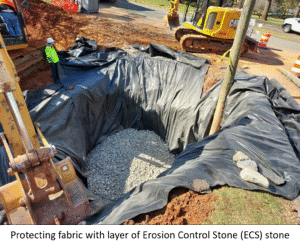
Final Grading
When sinkhole remediation is complete, the site must be prepared for the final layers of fill. Backfill the area with compacted fill (suitable soils) in stages to at least 95% of its maximum dry density. Overfill the hole by approximately 5% to account for future settlement and grade for positive drainage. Create a positive slope of at least 5% (approximately 6 inches of drop for every 10 feet) that directs surface water away from the repair area and any nearby structures.
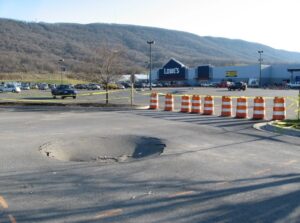
Special thanks to Hoyt Alford, P.E., for his collaborative efforts in developing this technical article with Speaking in Code author Alan Tuck. Hoyt has worked in the F&R Roanoke office for 27 years and is experienced in both construction services (CMT) and geotechnical engineering. Hoyt is known throughout Southwest Virginia as the “Sinkhole King” with his depth of knowledge about sinkholes and expertise in sinkhole remediation.
Download a PDF version of this article here.
But wait! We have a lot more to say!
For a complete picture of the Code and how it relates to Special Inspections, F&R would love to provide a virtual AIA-accredited Lunch & Learn presentation to the professionals at your firm.
Trouble Deciphering the Code? Call the Experts at F&R!
Alan S. Tuck, Director of Code Compliance & Training, Author of Speaking in Code
T 540.344.7939 | M 540.798.4440 | [email protected]

